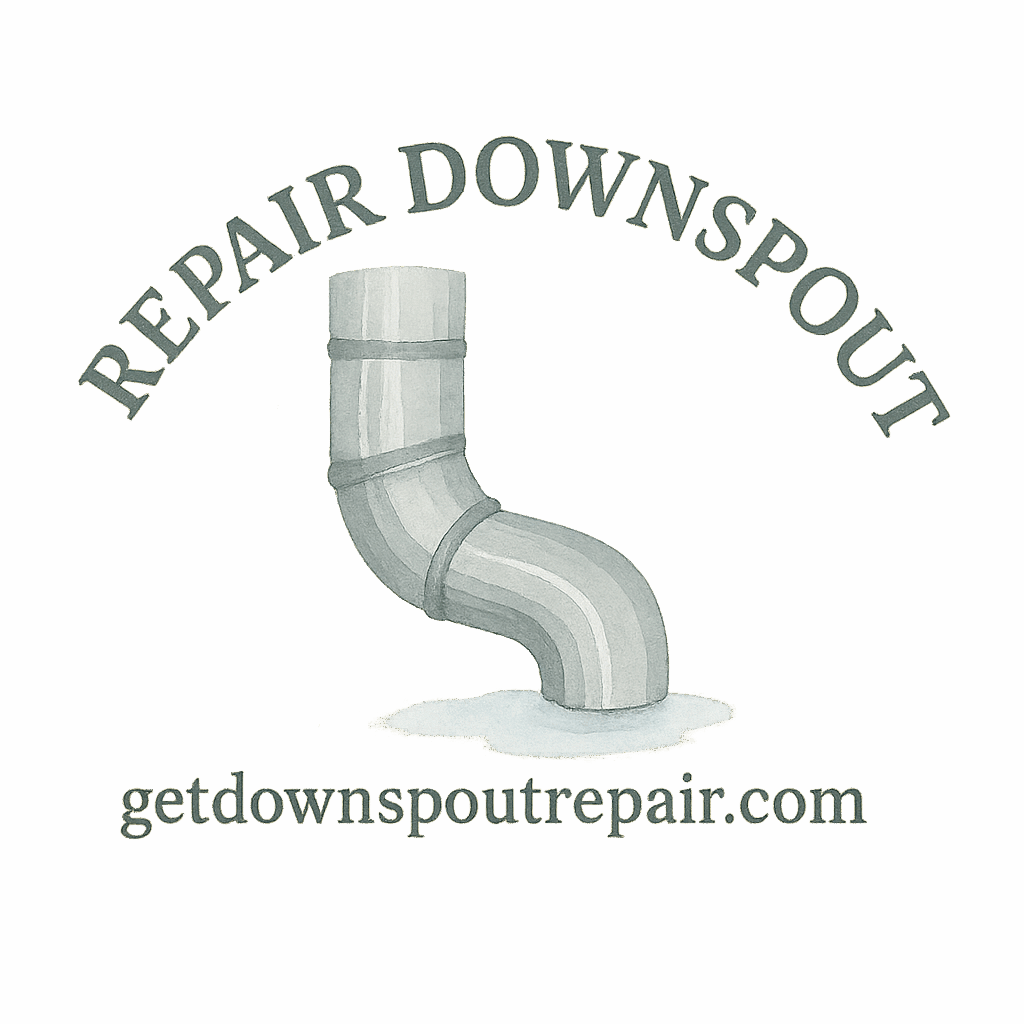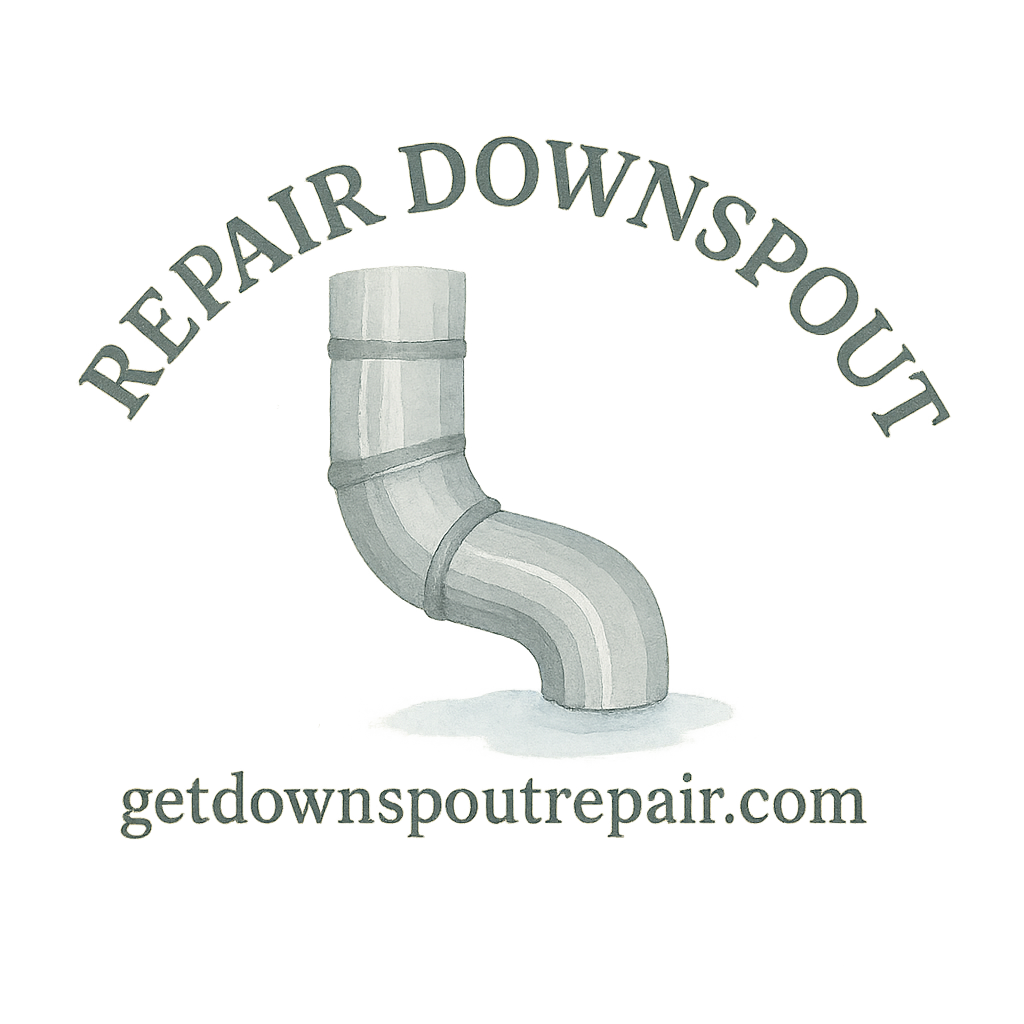Keeping your gutters and downspouts in good shape isn’t just about appearances—it’s about protecting your home from water damage, foundation cracks, and costly repairs. With a little know-how, you can handle most downspout issues yourself. In this guide, I’ll walk you through 7 DIY downspout repair routines that will keep your gutters flowing freely year-round.
Why Downspout Repair Matters for Every Homeowner
If you’ve ever seen rainwater spilling over the sides of your gutters like a waterfall, you already know the frustration of a clogged or damaged downspout. It’s not just annoying—it can lead to erosion, basement leaks, and even structural damage.
By learning basic downspout repair routines, you save money, extend the life of your gutter system, and protect your home’s foundation.
Common Signs Your Downspout Needs Attention
Before you can fix a problem, you need to spot it. Here are some tell-tale signs that your downspout may need repair.
Leaks, Rust, and Loose Joints
Water dripping from seams or rust stains running down the pipe are clear signs of trouble.
Overflowing Gutters and Water Damage
If water gushes over the sides during heavy rain, your downspout is either clogged or not draining properly.
Visible Clogs and Blockages
Leaves, twigs, and even bird nests can block the flow of water. Left unchecked, these blockages can cause backups that damage both your gutters and your roofline. Prevent clogging tips here.
Essential Tools and Materials for DIY Downspout Repair
Having the right tools makes repairs faster, safer, and more effective.
Basic Hand Tools You’ll Need
- Screwdriver set
- Pliers
- Utility knife
- Bucket and gloves
These essentials cover most small fixes.
Premium Tools That Make the Job Easier
For bigger jobs, having extension ladders, sealant guns, and specialized gutter cleaning gear can save you hours. Explore premium tools for a smoother repair experience.
Choosing Quality Products for Long-Lasting Fixes
Cheap sealants may fail quickly. Always opt for quality products to ensure your repairs last through multiple rainy seasons.
DIY Downspout Repair Routine #1: Cleaning Out Clogs
Clogged downspouts are the most common problem—and thankfully, one of the easiest to fix.
How to Spot and Prevent Clogs
If your gutters are overflowing but no cracks are visible, chances are you’ve got a clog. Look for water pooling near your foundation—a telltale sign that water isn’t being directed properly. Learn more about clog problems.
Step-by-Step Gutter Cleaning Routine
- Put on gloves and scoop out leaves and debris.
- Flush the downspout with a garden hose.
- For stubborn clogs, use a plumber’s snake.
- Test again with water to confirm the flow.
Regular gutter cleaning is the easiest way to keep problems from piling up.
DIY Downspout Repair Routine #2: Fixing Loose Joints
Loose connections often cause leaks and misaligned water flow.
Realigning Sections for Proper Flow
If sections of your downspout are out of line, loosen the screws, adjust them, and reattach. Think of it like snapping puzzle pieces back together.
Sealing Leaky Connections
Use a waterproof sealant around the seams. For extra durability, add rivets or new screws to secure the joints. Beginner repair tips here.
DIY Downspout Repair Routine #3: Repairing Cracks and Holes
Even small cracks can let water escape, causing big problems over time.
Quick Patching Techniques
For tiny holes, apply a dab of sealant or roofing cement. Larger cracks may need an aluminum patch.
Using Sealants vs. Replacing Sections
Sealants work great for minor issues, but if you see spreading rust or multiple holes, it’s better to replace the section entirely. Explore budget tips before deciding.

DIY Downspout Repair Routine #4: Adjusting Downspout Angles
Downspouts that don’t angle correctly won’t move water away from your foundation.
Why Angle and Position Matter
If water pools near your home, it can cause foundation cracks, basement flooding, and mold growth. Drainage protection is key to preventing these costly issues.
Simple Adjustments for Better Drainage
Loosen the straps holding the downspout and reposition it. If needed, add an extension to ensure water flows at least 3–5 feet away from your house.
DIY Downspout Repair Routine #5: Replacing Damaged Sections
Sometimes a repair won’t cut it—you’ll need to swap out damaged parts.
When a Section Needs Replacement
Look for severe rust, crushed sections, or parts that no longer hold their shape.
Step-by-Step Replacement Guide
- Unscrew and remove the damaged section.
- Measure and cut a replacement piece.
- Attach it using screws and seal the seams.
- Test with water to ensure a tight seal.
Check out this repair guide for detailed visuals.
DIY Downspout Repair Routine #6: Installing Splash Blocks and Extensions
A downspout without proper drainage support is like a faucet with no sink—it’ll just make a mess.
Protecting Your Foundation from Water Damage
Splash blocks and extensions direct water away from your foundation, preventing erosion and cracks. Learn about water damage risks.
Choosing Between Plastic, Concrete, and Flexible Extensions
- Plastic: Lightweight and cheap, but may shift.
- Concrete: Heavy-duty and long-lasting.
- Flexible: Perfect for tight spaces and gardens.
See more drainage solutions.
DIY Downspout Repair Routine #7: Preventing Future Problems
Prevention is always cheaper than repair.
Seasonal Maintenance Checklist
- Spring: Clean gutters after pollen and blossoms.
- Summer: Check for storm damage.
- Fall: Remove fallen leaves.
- Winter: Inspect for ice blockages.
Budget-Friendly Prevention Tips
Use DIY tools like gutter guards to minimize clogging. Regular inspections save you from expensive repairs down the road.
When to Call in the Professionals
Sometimes DIY just isn’t enough.
Knowing When DIY Isn’t Enough
If your gutters are sagging, your foundation is showing cracks, or water damage is already inside your home, it’s time to call an expert. Check downspout experts.
Benefits of Hiring a Licensed Contractor
Professional help ensures long-lasting results. They have specialized repair tools and experience that DIYers may lack. Learn more about pro help.
Final Thoughts
Taking care of your downspouts doesn’t have to be complicated. By following these 7 DIY downspout repair routines, you’ll keep water flowing where it should, protect your home’s foundation, and avoid costly repairs. Start with simple cleaning, move on to patching and adjustments, and don’t hesitate to call the pros when needed.
FAQs
1. How often should I clean my downspouts?
At least twice a year—once in spring and once in fall. More often if you have a lot of trees nearby.
2. What’s the best sealant for downspout repair?
Silicone-based outdoor sealants are flexible and waterproof, making them ideal.
3. Can I replace just one section of my downspout?
Yes! As long as the rest is in good shape, replacing a single section is effective.
4. Are splash blocks really necessary?
Yes—they keep water from pooling near your foundation, reducing erosion and water damage.
5. What if my downspout keeps clogging despite cleaning?
You may need gutter guards or a professional inspection for hidden issues.
6. Can I paint my downspout after repair?
Absolutely—just use exterior paint to protect it from rust and weather.
7. When should I hire a professional instead of DIY?
If you notice sagging gutters, large cracks, or water damage inside your home, it’s time to call in a licensed contractor.


